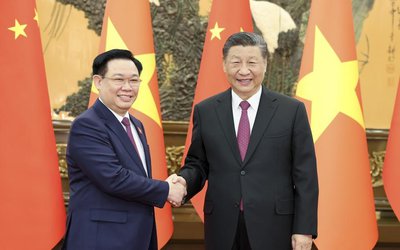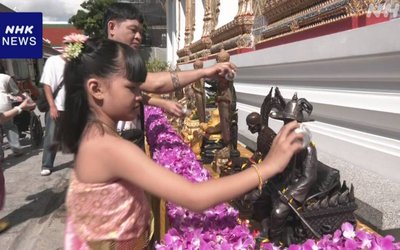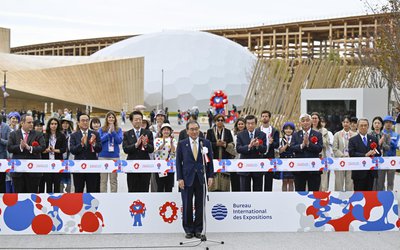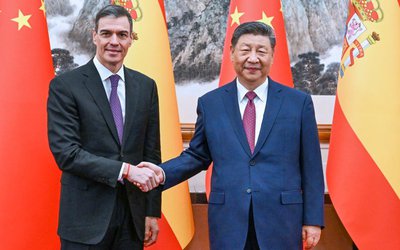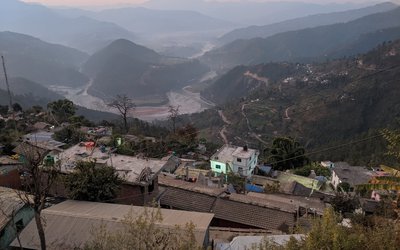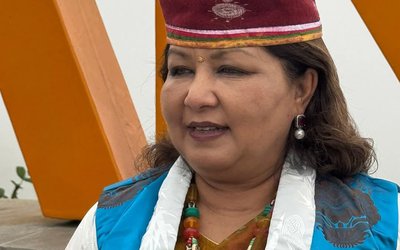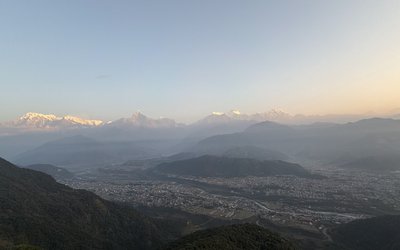
In an event not much publicised in India, China, on 15 June, launched the ‘First China-South Asia Cooperation Forum’ (CSACF) in Yunnan Province. It was also attended by the Indian Consul-General in Guangzhou, Sailas Thangal. The parallel, yet unasked question, either at or outside the CSACF venue, was if the new Chinese initiative, alongside the more-visible Belt and Road Initiative (BRI) could ring the death-knell for the South Asian Association for Regional Cooperation (SAARC), where it had failed to go beyond the ‘Observer’ status, to obtain full membership.
"The cooperation between China and South Asia is in accord with the development needs of the two sides and will greatly promote regional cooperation in Asia,” Li Jiming, Director-General, Foreign Affairs Office of Yunnan Province, said. He declared that the CSACF was a part of the BRI, “which is expected to bring together South Asian countries that share a geographical vicinity and cultural affinity with China” according to a dispatch from the venue in ‘The Island’ group of newspapers in Sri Lanka, from S H Venkataramani, the New Delhi-based Special Correspondent.
Responding to a specific question from The Island correspondent, Li denied that Chinese investments in foreign countries tantamount to a debt-trap. "We have been providing loans for business purposes only after serious consideration that involves a thorough study of feasibility report and financial calculation,” he said, when asked if Chinese investments, as in Pakistan ($ 100 b), Sri Lanka ($ 14 b) and other nations in South Asia would not lead to a debt-trap.
Indian praise
According to the newspaper, “Over 400 ministers, senior officials, delegates and media representatives from all SAARC member-states except Bhutan attended the meeting at the luxurious Fuxian Lake Hilton... Speakers from seven of the eight SAARC countries — Afghanistan, Bangladesh, Maldives, India, Nepal, Pakistan and Sri Lanka — plus Myanmar and Vietnam from South-East Asia spoke eloquently, lauding Beijing’s initiative to launch the CSACF to bring South Asia and China together on one platform.”
Though this was only the first of the CSACF meetings, for five years now, Beijing has been hosting an annual China-South Asia Expo. This year’s Expo coincided with the CSACF meeting, along with the 25th China Kunming Import & Export Fair at the Dianchi International Convention and Exhibition Centre in Kunming. Other parallel events included the opening ceremony of China-South Asia Poverty Reduction Exhibition, China-South Asia High-Level Round-table Meeting for Business Cooperation, China-South Asia Local Government Leaders' Dialogue, and a seminar on Financial Cooperation Development Strategy.
As The Island reported, Indian CG, Sailas Thangal, said while the CSACF boasts of the world’s biggest market, the region is home to millions of poor people. "So, the Governments of China and South Asia should facilitate the criss-crossing of ideas for development, and a trustworthy connection of hearts and minds”.
India’s presence and participation at the CSACF, though at the Consul-General level, is at variance from its boycott of the BRI, thus indicating a clear delineation between trade and sovereignty issues. As may be recalled, the Indian boycott of the BRI was mainly because its Pakistan arm was passing through ‘occupied Kashmir’ in China’s possession.
Apart from the Indian CG, speakers from nations such as Pakistan and Bangladesh also hailed the CSACF. As The Island reported, a document, the ‘Fuxian Lake Initiative’, recognised that China and South Asian countries "should further deepen interactions to consolidate cooperation, expand its basis, materialise cooperation projects and improve cooperation quality, making contributions to the realisation of sustainable, inclusive and prosperous development”.
Existential dilemma
China’s CSACF initiative comes at a time when the SAARC has been going through the throes of an existential dilemma, particularly in the context of continual India-Pakistan adversities and the larger institutional failure to make it comparable to the EU, ASEAN and other regional formations across the world. Almost since the launch of the SAARC, or even through the long run-up earlier, India was said to be uncomfortable with the idea of smaller neighbours using the proposed forum to ‘gang up’ against India, at times under the aegis of Pakistan.
Formally founded in the Bangladesh capital of Dhaka in 1985 after much delay and deliberations, the SAARC has often been stymied by India-Pakistan differences. Though bilateral issues are supposed to be kept off the forum, Pakistan has obliquely targeted India at the bi-annual summit, from time-to-time. However, if anything could be called the last-nail, India drove it by declaring a boycott of scheduled summit in the Pakistani capital of Islamabad in November 2016.
Politics and diplomatic differences between member-nations notwithstanding, SAARC initiatives in specific sectors have still made halting yet substantial progress, but not commensurate with the time-lag and consequent shifts and changes in specifications and contemporary requirements. Overall, outside of strained political relations, among member-nations, including Afghanistan and Pakistan, among others, the SAARC has not been able to achieve much in terms of overall trade, investments and mutual developmental assistance.
According to available figures, intra-SAARC trade is still at a low five percent of their cumulative global trade, and still at around $50-billion mark. Against this, as pointed out by Yunnan Province Governor Ruan Chengfa at the CSACF launch, China-South Asia trade shot up by 31 percent in three years –- from $ 93.3 b in 2015 to $126.26 b this year.
Quiet diplomacy
Through quiet and efficient diplomacy, India ensured that most other members preceded or succeeded India in declaring their own boycott of the SAARC Islamabad Summit until Pakistan mended its ways on the ‘terrorism’ front. India was among those nations, yes, but was not alone. Barring the early weeks of Pakistan’s reluctant but inevitable announcement on what it called the ‘postponement’ of the summit, no member-nation has taken any initiative about reviving the leadership meeting, either in Pakistan or any of the other member-nations.
It is in this context that India at least needs to take a closer look at the new Chinese initiative, which comes alongside the BRICS (Brazil, Russia, India, China, South Africa) grouping and the BRI. Among them, the BRICS involves multiple nations, including China and India, with their own political agendas and economic and developmental priorities. Such a multi-nation, multi-faceted approach may even affect the functioning of the BRICS even more over time, despite the signatories sending out early signals of an alternative fiscal forum for the world, beyond the West-controlled International Monetary Fund (IMF) and the World Bank.
The same, however, cannot be said about China’s CSACF. With President Xi Jinping’s BRI very much in place, China can develop, use and exploit the new forum to its trade and economic benefit –- that too after packaging it as ‘shared benefits’ with the other nation. It can co-opt India but on its terms, or deal with individual nations or collectives thereof, again on its terms –- or deal with each one of these nations collectively, using the BRI arms both for purpose of investments, transportation and transit-points, where applicable and/or possible.
In political terms, there is a possibility that through the CSACF, China can make other participant-nations to feel that India is only one of them, and not bigger and more powerful than any or all of them. Given that many of these nations want an ‘eternal friend’ in the UN Security Council, where India is a non-veto, non-permanent member, China has always had an upper hand, even otherwise. These are precisely the kinds of situations that successive Indian governments consciously and Indian consciousness otherwise have been trying to side step, before and after the Cold War.
Peace through Pak?
In this context, DG Li Jiming’s observations that Pakistan and the CSACF “will work together to promote regional peace and prosperity as well as implementing President Xi’s concept of ‘shared destiny’ assumes greater relevance. "I have made personal conversations with Pakistan's top-level diplomat in China and without any doubt, this forum will bring positive influence to the relationship between china and Pakistan as well,” he said.
This does not mean that India is blind or silent about the CSACF initiative, which like China’s investments drive in the neighbourhood, could bind them eternally to Beijing, as much geo-politically and geo-strategically as it is economically. Given that most of India’s neighbours, barring Bhutan, have joined the BRI, and nations like Maldives have become increasingly hostile, India cannot be but alive to the emerging situation -- signing of huge investment deals not only with China but also with Pakistan, alongside Saudi Arabia.
At the same time, there is also a need for India to review its approach to reviving the SAARC, and if it would help the larger South Asian cause, alongside and going beyond the CSACF. Considering China’s fast-track approach to initiatives of the kind, and considering that the CSACF includes not only all SAARC member-nations but also other nations in South-East Asia too, New Delhi may have a greater problem on hand if it seeks to revive the SAARC on a later day.
With Myanmar and Vietnam having already signed in on to the CSACF, China can still claim that it was not a challenge to or replacement for the SAARC. Instead, like the Shanghai Cooperation Organization (SCO), wherein India and Pakistan are also now members, China can say, the CSACF too is one more regional organization, with specific sub-regional agenda.
Courtesy: Observer Research Foundation. The views expressed here is his personal.
